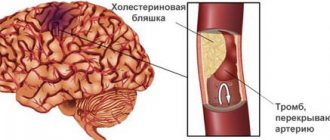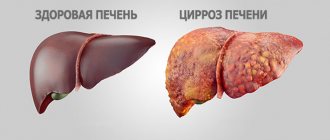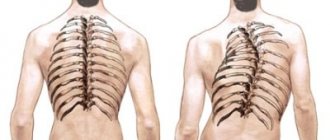Psychotherapist
Kumov
Mikhail Sergeevich
20 years of experience
Psychotherapist, member of the Russian Professional Psychotherapeutic League
Make an appointment
Neurasthenia is a pathological condition of the human nervous system that develops against the background of prolonged emotional or physical stress. Asthenic neuroses develop mainly in patients aged 20-40 years. Men suffer from the disease more often than women. The reasons for the development of neurasthenia vary, but the main one remains the extreme degree of exhaustion of the nervous system of a child or adult.
Symptoms of pathology
The signs of neurasthenia are specific, which simplifies diagnosis. The most common symptom is headache, which occurs in patients in the evening. They complain of compression of the head on all sides. This phenomenon is referred to by doctors as the “neurasthenic’s helmet.” The second most common symptom is dizziness. Men and women suffering from asthenic neuroses describe it as a feeling of constant rotation inside the head. Furnishings seem motionless to patients. Dizziness worsens during stressful situations, increased physical activity, or weather fluctuations.
Often the pathology is accompanied by dyspeptic symptoms:
- heartburn;
- belching;
- loss of appetite;
- heaviness in the stomach;
- flatulence;
- constipation
Men may experience increased urination and premature ejaculation during sexual intercourse. Women suffer from low sex drive. These symptoms cause patients to feel dissatisfied and feel weak.
Symptoms of the hypersthenic form of neurasthenia are increased irritability, high nervous excitability, emotional lability. Patients easily lose control of themselves and shout at relatives or colleagues. Men and women become intolerant of other people's mistakes and often insult other people. Persons suffering from asthenic neuroses cannot tolerate extraneous sounds - conversations, music, traffic on the street. Irritation occurs when seeing a large number of people or when moving through open spaces.
Patients experience a sharp decline in performance. Its cause is not only physical exhaustion, but also absent-mindedness. The process of inclusion in work requires significant effort and is not always successful.
The second stage of asthenic neurosis is irritable weakness. It develops in patients who were unable to achieve complete recovery during the hypersthenic phase. Signs of neurasthenia may become more pronounced due to the ongoing action of the pathogenic factor. The patient remains irritable, but quickly becomes apathetic due to extreme exhaustion. Screaming or anger gives way to a feeling of powerlessness. Men and women accumulate grievances against others. Attacks of hysterical crying are possible.
The third form of pathology – hyposthenic – is characteristic of anxious and suspicious people with a weak nervous system. Patients are characterized by lethargy, physical exhaustion, and indifference to themselves and the world around them. The mood of children or adults is constantly reduced, passivity appears, and previous interests are forgotten.
Are you experiencing symptoms of neurasthenia?
Only a doctor can accurately diagnose the disease. Don't delay your consultation - call
Irritable weakness
This is the next phase of the disease if adequate treatment was not carried out in the first. From the name it is clear that the stage is characterized by increased irritability against the background of increasing mental exhaustion. Easily excited for any reason, the patient, after a short-term, bright burst of temper, feels powerless. The state of excitement is easily replaced by a feeling of resentment and crying. Concentration and concentration are difficult, causing fatigue, headaches and other painful sensations of various localizations. Repeated distractions from the work process with the desire to take a break do not relieve fatigue, and returning to work does not bring the expected results, which leads the neurasthenic to severe mental exhaustion.
Diagnostic measures
Diagnosis and treatment of neurasthenia is carried out by a neurologist. The doctor is based on the patient's complaints and the results of the physical examination. When making a diagnosis, it is necessary to ensure that the child or adult does not have chronic infectious diseases, intoxications or somatic pathologies. Neurasthenia may be the initial stage of their manifestation.
Often asthenic neurosis is the result of brain damage by a tumor, inflammatory process or neurotoxin. To exclude the listed pathologies from the history, the patient is referred for computed tomography or magnetic resonance imaging. The results of hardware studies make it possible to exclude changes in brain tissue from the patient’s medical history.
Hyposthenic form
It can develop as the next phase of asthenic neurosis or occur immediately in people with an asthenic psychotype. At this stage, a patient with neurasthenia suffers from mental and physical weakness, lethargy, low mood, lack of interest in any activity, and passivity. Feelings of sadness and anxiety haunt him constantly, causing emotional instability. A neurasthenic person is prone to tearfulness, touchiness, and complaints about his health. Being focused on his sensations, he cannot concentrate to perform intellectual tasks or physical work. Asthenic neurosis can be either an independent disease or a harbinger or manifestation of more serious, difficult to treat mental disorders - schizophrenia, atypical depression. Neurasthenia can also be a symptom of somatic diseases - HIV, tuberculosis, oncology, etc. Therefore, it is so important to consult a specialist in time when the first signs of the disease appear. An experienced psychiatrist or psychotherapist at the Neopsy Mental Health Center is able to differentiate this disorder from other diseases and prescribe effective treatment with a lasting positive therapeutic result.
Therapeutic course
Elimination of symptoms of neurasthenia in children or adults begins with determining the etiological factor that caused the development of the pathology. Patients are shown a reduction in psychological and physical stress. Able-bodied persons must follow the neurologist's instructions regarding work and rest schedules.
Drug therapy includes:
- hopantenic acid;
- calcium glycerophosphate;
- iron supplements;
- bromine;
- caffeine.
When determining the recommended dosage of medications, the neurologist takes into account the patient's physical and emotional state. Against the background of severe cardiovascular disorders, patients are prescribed valerian or motherwort preparations.
Treatment of the hypersthenic form of neurasthenia is carried out with the use of tranquilizers (chlordiazepoxide, nitrazepam). Sleep disturbances are treated with sleeping pills - hopiclone, zolpidem. Patients are recommended to drink coffee, strong tea with the addition of Chinese lemongrass, ginseng root or Manchurian aralia.
Thioridazine remains a common prescription for neurasthenia. Small doses of this drug have a stimulating effect on the human nervous system. Large doses are used for the hypersthenic form of the pathology due to the sedative effect.
Types of neurasthenia
According to the International Classification of Diseases, 10th revision (ICD-10), types of neurasthenia are represented by two types.
The first type is increased fatigue after mental work. A person complains that he is doing worse at work or in everyday activities due to distracting associations, memories, and problems with attention. Mental exhaustion is more pronounced.
The second type is general weakness after minor physical activity (not going to the gym, but something ordinary) with a feeling of pain in the muscles. The person also says that he cannot relax.
In other classifications, there are hypersthenic and hyposthenic neurasthenia - these are rather phases (stages) of the disorder, which will be discussed further.
Forecast and preventive measures
With timely initiation of therapy, doctors form a favorable prognosis for patients. The main danger of neurasthenia is the transition to a chronic stage, which is difficult to treat.
Preventive measures are based on a person’s compliance with the work and rest regime. During periods of nervous tension, patients are advised to resort to relaxation techniques and minimize physical activity. A significant role in the prevention of asthenic neurosis is given to the variety of activities of children and adults. Regular switching between tasks of a different spectrum can reduce the risk of emotional exhaustion.
Treatment of asthenic neurosis at Neopsy
Methods for diagnosing asthenic neurosis at the Center include the clinical-psychopathological method - a conversation with the patient (with his consent - with relatives), studying the medical history at the first consultation during the collection of anamnesis. Usually this is enough for our experienced specialists to identify neurasthenia. But to make a more accurate diagnosis, in the presence or suspicion of the possibility of somatic diseases, additional laboratory and hardware examinations and consultations with related specialists are prescribed. After confirmation of the diagnosis, an individual treatment plan is developed, which includes psychotherapeutic methods of influence, physical and dietary therapy, and drug treatment.
The Center’s specialists are fluent in all modern methods of psychotherapeutic assistance for asthenic neurosis, including hypnotherapy, relaxation, resource trance, autogenic training, etc. Together with the patient, a psychiatrist or psychotherapist develops a way to reduce physical and intellectual stress (up to changing jobs, giving up part-time work). etc.), rest, sleep and nutrition regime. The high professionalism of the specialists at the Neopsi Center for Mental Health allows us to treat asthenic neurosis with high efficiency. Contact us for help through the website services or call the specified phone number.
Call and we will help solve your problems!
Prices
| Name of service | Cost of services, rub. | |
| Blockade for pain syndrome | RUB 1,500 | Sign up |
| Appointment (examination, consultation) with a neurologist, primary treatment and diagnostic | RUB 1,600 | Sign up |
| Repeated treatment and diagnostic appointment (examination, consultation) with a neurologist | RUB 1,400 | Sign up |
| Primary preventive appointment (examination, consultation) with a neurologist | RUB 1,700 | Sign up |
| Repeated preventive appointment (examination, consultation) with a neurologist | RUB 1,500 | Sign up |
| Paravertebral blockade | RUB 1,800 | Sign up |
All prices
Consequences of the disease
The consequences of neurasthenia can be the following diseases and abnormalities:
- prostatitis;
- digestive disorders;
- chronic diseases worsen;
- severe sleep problems;
- dysbacteriosis;
- herpes;
- decline in hemoglobin levels;
- skin diseases develop (neurodermatitis, psoriasis);
- severe memory impairment.
Features of the course in men
Neurosis occurs differently in all people. In women, the hysterical variety is more often found. Characterized by unstable behavior, dramatization of situations, tears and screams. Symptoms when treating neurosis in men who require treatment are somewhat different. They are less likely to encounter a diagnosis, but more often progress the condition to its extreme stages. In representatives of the stronger sex, the diagnosis is often associated with overexertion and workaholism. Common features include:
- Aggression. Reactions to familiar things become acute. A man responds to everyday events with anger.
- Low self-esteem. A person does not believe in himself and is afraid to start a new business.
- Strong self-criticism. They place high and sometimes unattainable demands on themselves.
- Inability to adapt to the situation. Even a small failure unsettles a man with neurosis.
Of particular importance for representatives of the stronger sex is such a manifestation as decreased libido. Sexual life is becoming less and less attractive. In addition, there is a complete or partial absence of erection. This leads to the progression of a nervous disorder and forces one to completely withdraw into oneself. It is important that the male half of society has always been distinguished by hushing up its own problems. Hiding the facts and the lack of measures taken also provokes the development of HP in a man.
The harm of self-medication
Many people try to get treatment based on advice taken from a dubious website. Following such recommendations and taking measures on your own is extremely dangerous. The following situations may occur in response to improper treatment:
- Progression of neurosis;
- Development of a persistent irreversible disorder;
- The appearance of other chronic diseases;
- Suicidal thoughts;
- Drug poisoning;
- Problems in society;
- Damaged relationships with loved ones and colleagues.










